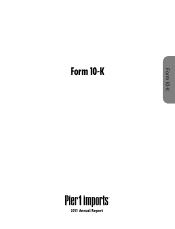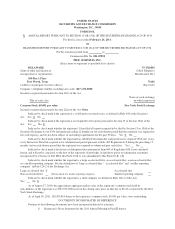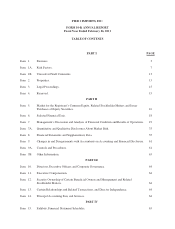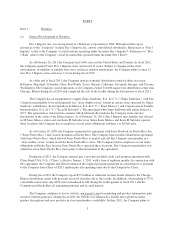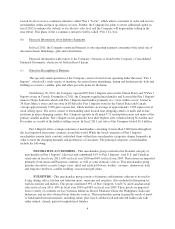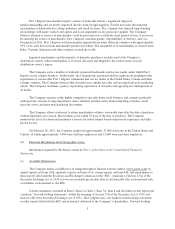Pier 1 2011 Annual Report Download - page 14
Download and view the complete annual report
Please find page 14 of the 2011 Pier 1 annual report below. You can navigate through the pages in the report by either clicking on the pages listed below, or by using the keyword search tool below to find specific information within the annual report.The success of the business is dependent on factors affecting consumer spending that are not controllable
by the Company.
Consumer spending, including spending for the home and home-related furnishings, are further dependent
upon factors besides general economic conditions and include, but are not limited to, levels of employment,
disposable consumer income, prevailing interest rates, consumer debt, costs of fuel, inflation, recession and fears
of recession or actual recession periods, war and fears of war, pandemics, inclement weather, tax rates and rate
increases, consumer confidence in future economic conditions and political conditions (including the possibility
of a governmental shut down), and consumer perceptions of personal well-being and security. Unfavorable
changes in factors affecting discretionary spending could reduce demand for the Company’s products and
therefore lower sales and negatively impact the business and its financial results.
Failure by the Company to identify and successfully implement strategic initiatives could have a negative
impact on the Company.
The Company’s long-term growth, strategic plans and capital allocation strategies are dependent on the
Company’s ability to identify and successfully implement those items. If these initiatives are not properly
developed and successfully executed, the implementation of such initiatives may negatively impact the
Company’s business operations and financial results. While the Company believes these disruptions would be
short-term, it is unknown whether the impact would be material.
The Company must be able to anticipate, identify and respond to changing trends and customer
preferences for home furnishings.
The success of the Company’s specialty retail business depends largely upon its ability to predict trends
in home furnishings consistently and to provide merchandise that satisfies consumer demand in a timely manner.
Consumer preferences often change and may not be reasonably predicted. A majority of the Company’s
merchandise is manufactured, purchased and imported from countries around the world and may be ordered well
in advance of the applicable selling season. Extended lead times may make it difficult to respond rapidly to
changes in consumer demand and as a result, the Company may be unable to react quickly and source needed
merchandise. In addition, the Company’s vendors may not have the ability to handle its increased demand for
product. The seasonal nature of the business leads the Company to purchase and requires it to carry a significant
amount of inventory prior to its peak selling season. As a result, the Company may be vulnerable to evolving
home furnishing trends, changes in customer preferences, and pricing shifts, and may misjudge the timing and
selection of merchandise purchases. The Company’s failure to anticipate, predict and respond in a timely manner
to changing home furnishing trends could lead to lower sales and additional discounts and markdowns in an
effort to clear merchandise, which could have a negative impact on merchandise margins and in turn the results
of operations.
Failure to control merchandise returns could negatively impact the business.
The Company has established a provision for estimated merchandise returns based upon historical
experience and other known factors. If actual returns are greater than those projected by management, additional
reductions of revenue could be recorded in the future. Also, to the extent that returned merchandise is damaged,
the Company may not receive full retail value from the resale of the returned merchandise. Introductions of new
merchandise, changes in merchandise mix, associate selling behavior, merchandise quality issues, changes in
consumer confidence, or other competitive and general economic conditions may cause actual returns to exceed
the provision for estimated merchandise returns. An increase in merchandise returns that exceeds the Company’s
current provisions could negatively impact the business and financial results.
8



